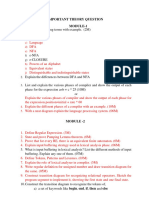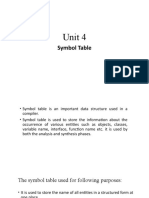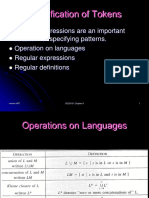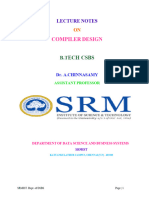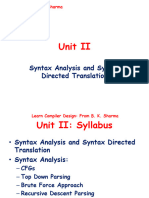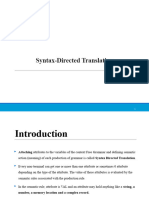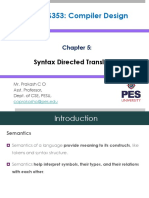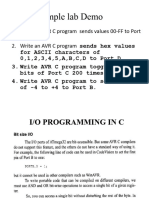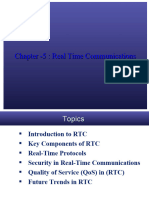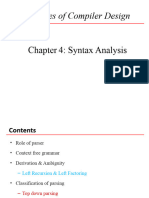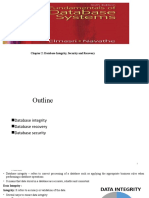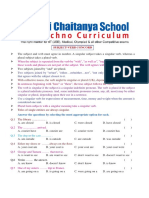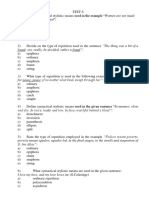0% found this document useful (0 votes)
937 views25 pagesChapter 5 Syntax-Directed Translation
The document discusses syntax-directed translation (SDT) which refers to a method of compiler implementation where source language translation is driven by the parser and parse trees. There are two main ways to represent semantic rules associated with a context-free grammar for SDT: syntax-directed definitions (SDD) and syntax-directed translation schemes. SDDs associate attributes and rules with grammar symbols and productions to evaluate attributes at parse tree nodes, while translation schemes specify the order of evaluating semantic actions.
Uploaded by
Yohannes DerejeCopyright
© © All Rights Reserved
We take content rights seriously. If you suspect this is your content, claim it here.
Available Formats
Download as PPTX, PDF, TXT or read online on Scribd
0% found this document useful (0 votes)
937 views25 pagesChapter 5 Syntax-Directed Translation
The document discusses syntax-directed translation (SDT) which refers to a method of compiler implementation where source language translation is driven by the parser and parse trees. There are two main ways to represent semantic rules associated with a context-free grammar for SDT: syntax-directed definitions (SDD) and syntax-directed translation schemes. SDDs associate attributes and rules with grammar symbols and productions to evaluate attributes at parse tree nodes, while translation schemes specify the order of evaluating semantic actions.
Uploaded by
Yohannes DerejeCopyright
© © All Rights Reserved
We take content rights seriously. If you suspect this is your content, claim it here.
Available Formats
Download as PPTX, PDF, TXT or read online on Scribd
/ 25



















